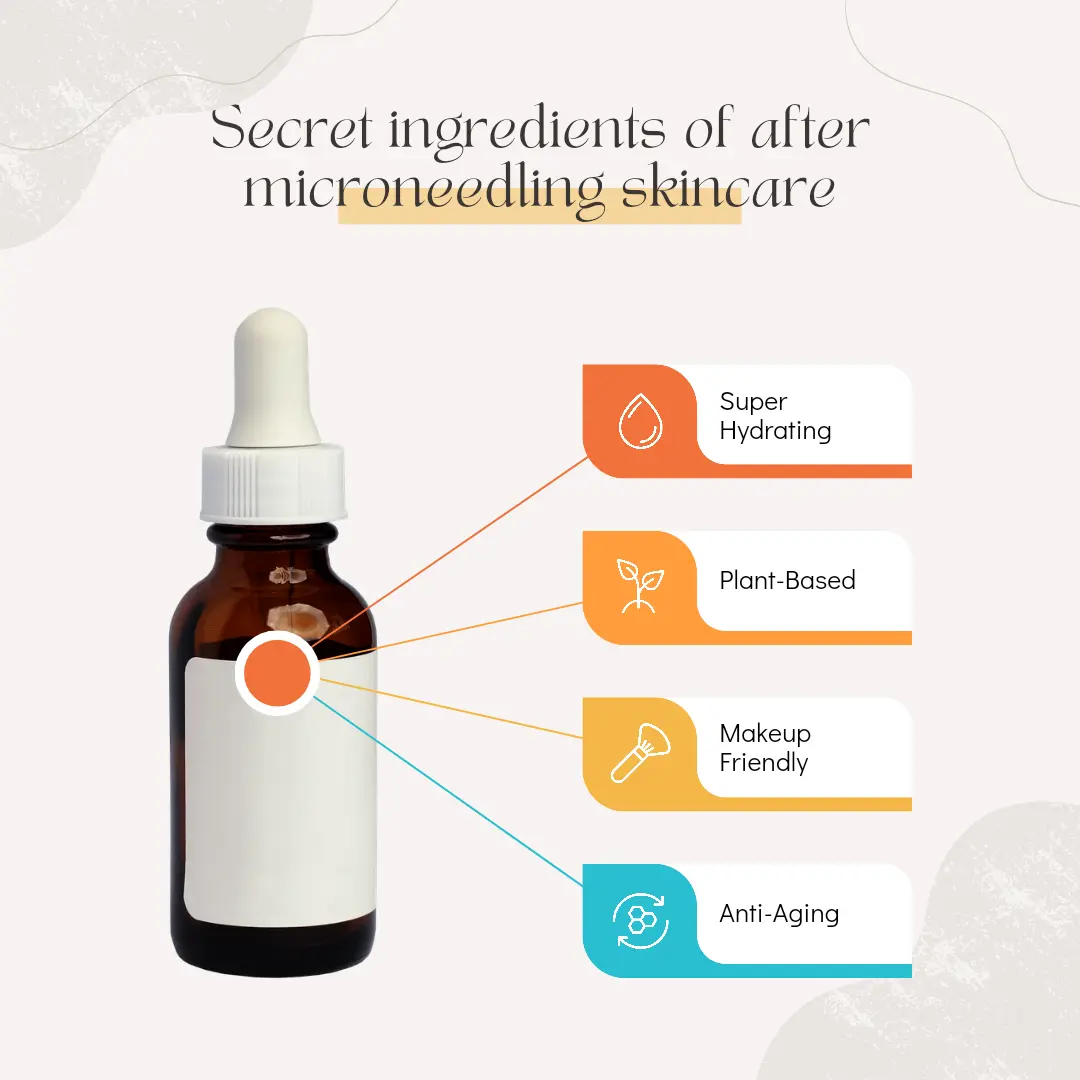What to do after microneedling: 2 ingredients for your skincare.
Updated: 8 December 2023
117

Microneedling is a skin rejuvenation procedure and it can fix almost all the issues related to skin, but nothing comes free, it also has some common side effects. However, it is essential to have a proper skincare routine after microneedling to overcome these side effects and to keep the skin intact.
After micro needling skincare is the biggest challenge.
Microneedling makes the skin more vulnerable to pigmentation and sunburn if not cared for. Here are 2 age-defying secret ingredients that are a must-have after microneedling.
1- Vitamin-C
In our bodies, vitamin C (ascorbic acid) primarily comes from our diet, like citrus fruits. Exposure to sunlight and environmental pollution can reduce the amount of vitamin C in our skin. Since vitamin C is a powerful antioxidant, it makes sense to boost its levels in our skin. Most of the time, vitamin C is in the form of ascorbic acid, which is active and beneficial for the skin. Sometimes, it can turn into dehydro-L-ascorbic acid in small amounts, but it can convert back to ascorbic acid. However, it loses its effectiveness if it turns into diketogulonic acid due to irreversible changes. This can happen if vitamin C products are exposed to air or UV rays. So, it’s crucial to store vitamin C products in airtight, light-resistant containers to keep them effective. Studies have shown that applying vitamin C topically after microneedling can protect the skin from the harmful effects of the sun.
How to use Vitamin C after microneedling?
It reduces sunburn cells and redness caused by both UVA and UVB rays. Adding topical vitamin C to your sunscreen can enhance sun protection compared to sunscreen alone. Vitamin C in “after-sun” products also helps neutralize harmful molecules UV radiation produces. Vitamin C is also essential for collagen production, which is crucial for maintaining skin firmness after microneedling. A number of options are available to incorporate excessive Vitamin C into the skin for exceptional outcomes.
Using ascorbic acid can boost collagen production in skin cells. Some studies in humans have even shown improvements in the appearance of wrinkles when using vitamin C topically. Overall, Using vitamin C preparations after microneedling are helpful in preventing or reducing the harmful effects of UV radiation, although some people may experience mild discomfort like stinging and irritation when applying them topically because the skin has experienced a complete new turnover of the cells.
2- Vitamin-A
When incorporating retinoids like Vitamin A derivatives into your skincare routine after microneedling, especially if your skin is sensitive, it’s essential to start gradually. Begin with a lower concentration to allow your skin to acclimate. Apply the product in the evening, as retinoids can increase sensitivity to sunlight. Use a moisturizer to minimize any potential dryness or irritation, which can be more pronounced after microneedling. Consistency is vital, so apply the product regularly but not excessively, as a little goes a long way.
Over time, you can gradually increase the concentration if your skin tolerates it well. It’s also crucial to wear sunscreen during the day to protect your skin, especially when using retinoids, as they can make your skin more susceptible to UV damage. Following these guidelines can help you maximize the benefits of retinoids in your skincare routine after microneedling while minimizing any potential side effects.
The initial and most noticeable sign of the aging process is the decline in both the appearance and functionality of the skin. This deterioration becomes increasingly evident as individuals grow older. It impacts critical skin functions, including the regulation of body temperature, maintenance of fluid balance, preservation of electrolytes and proteins, synthesis of vitamin D, removal of waste products, immune monitoring, sensory perception, and defense against harmful environmental factors.
Thus, it is essential to incorporate these vitamins in your skincare routine post-micro needling, as consumers are becoming more aware of harmful chemicals and toxins in everyday cosmetic products. Consequently, there is a growing trend in the natural beauty industry, driven by innovative technology and high-performance ingredients, in response to the increasing demand for healthier alternatives.
Please Write Your Comments